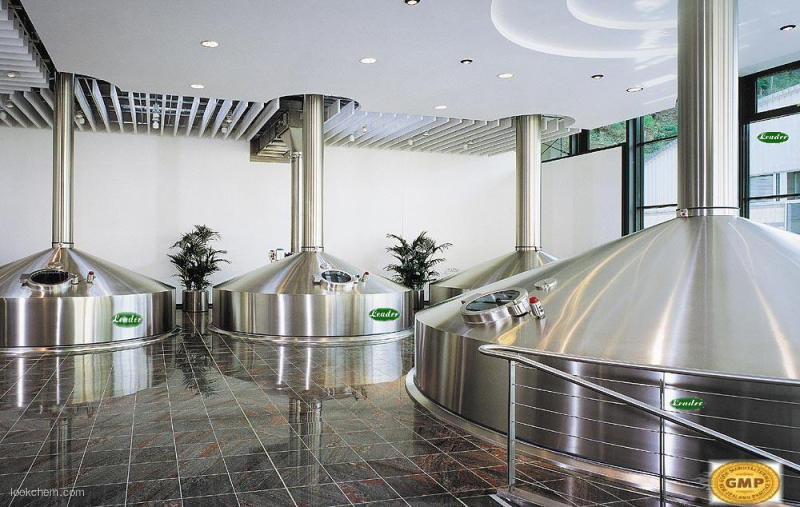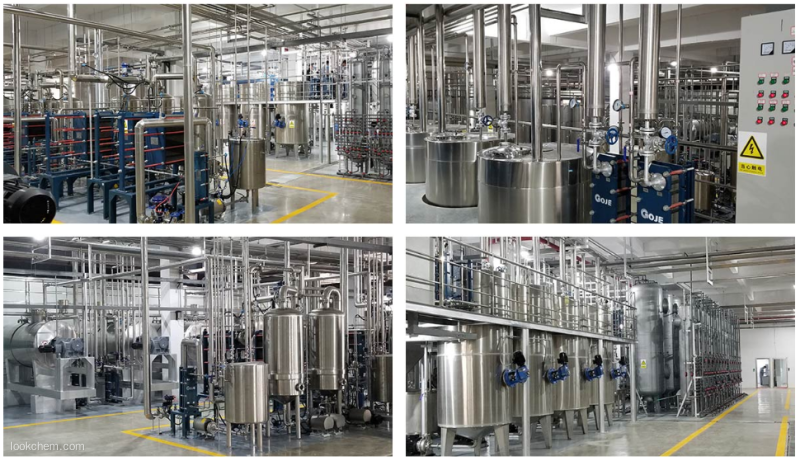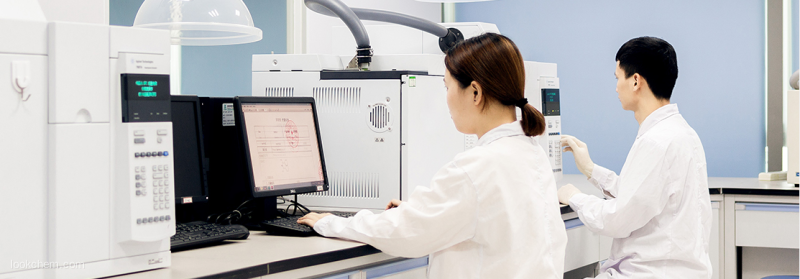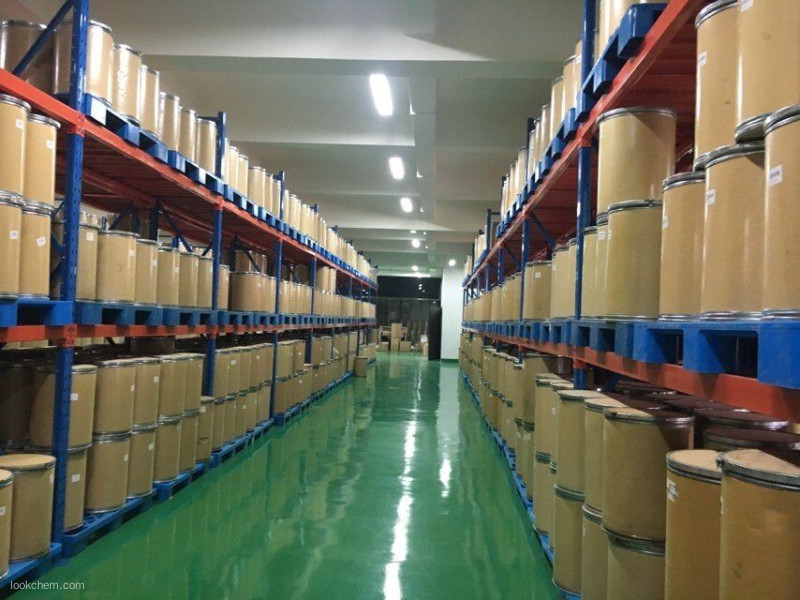About Product Details
| SUNFLOWER SEED OIL Basic information |
| |
| SUNFLOWER SEED OIL Chemical Properties |
| density |
0.9 g/mL at 25 °C(lit.) |
| refractive index |
n20/D1.475 |
| Fp |
>110℃ |
| storage temp. |
room temp |
| solubility |
Miscible with benzene, chloroform, carbon tetrachloride, diethyl ether, and light petroleum; practically insoluble in ethanol (95%) and water. |
| form |
neat |
| EPA Substance Registry System |
Sunflower oil (8001-21-6) |
| Hazard Codes |
Xi |
| Risk Statements |
66 |
| Safety Statements |
24/25 |
| WGK Germany |
- |
| F |
8 |
| HS Code |
1512190020 |
| Provider |
Language |
| SigmaAldrich |
English |
| |
| SUNFLOWER SEED OIL Usage And Synthesis |
| Chemical Properties |
Pale-yellow, semidrying oil; mild taste; pleasant odor. Soluble in alcohol, ether, chloroform, and carbon disulfide. Combustible. |
| Chemical Properties |
Sunflower oil occurs as a clear, light yellow-colored liquid with a bland, agreeable taste. |
| Uses |
Modified alkyd resins, soap, edible oil, margarine, shortening, dietary supplement. |
| Uses |
sunflower seed oil is expressed from sunflower seeds. |
| Uses |
sunflower oil (Helianthus annuus) is commonly used as a carrier oil, it softens and smooths the skin. Sunflower oil has a high linoleic acid and other essential fatty acid content. In addition, it contains lecithin, carotenoids, and waxes. This oil is considered a non-comedogenic raw material. |
| Uses |
Sunflower Oil is a highly polyunsaturated oil obtained from sunflower seeds. There are two types of sunflower grown: an oilseed type used as a vegetable oil, and a nonoilseed type used for human food and bird seed. The composition of sunflower oil varies according to location and growing temperature. In general, sunflowers grown above the 39th parallel are high in linoleic acid and those grown below are high in oleic acid. The high linoleic variety is used for margarine and salad oil, while the high oleic variety is used in frying applications. This bland-flavored oil has a smoke point of 485–490°f (252–254°c) which gives it utility in baking, cooking, and frying foods. It is also used as a salad oil. In the hydrogenated form, it is used in margarine and shortenings. |
| Production Methods |
Sunflower oil is obtained from the fruits and seeds (achenes) of the sunflower, Helianthus annus (Compositae), by mechanical means or by extraction. |
| General Description |
Sunflower seed oil from Helianthus annuus contains saturated fatty acids (palmitic and stearic acids), monounsaturated fatty acid (oleic acid), and polyunsaturated acid (mostly linoleic acid). In addition, this edible oil also contains nonglyceridic contents including tocopherols and plant sterols, and is rich in vitamins and minerals. |
| Pharmaceutical Applications |
Sunflower oil is widely used as an edible oil, primarily in oleomargarine. It is also used extensively in cosmetics and pharmaceutical formulations.
Therapeutically, sunflower oil is used to provide energy and essential fatty acids for parenteral nutrition. Studies have shown that sunflower oil may be used in intramuscular injections without inducing tissue damage. |
| Biochem/physiol Actions |
Sunflower seed oil is one of the most used vegetable oils in human nutrition. Oilseed crop sunflower (Helianthus annuus) is also used for biodiesel production. Sunflower oil is used as an emollient in cosmetics, and it serves as an effective phenolic antioxidant. Phytosterols in sunflower oil help in regulating the cholesterol levels in the body. Therefore, sunflower oil may be used to treat pathological conditions such as like acne, arthritis, and hair damage. |
| Safety |
Sunflower oil is widely used in food products and on its own as an edible oil. It is also used extensively in cosmetics and topical pharmaceutical formulations, and is generally regarded as a relatively nontoxic and nonirritant material. |
| storage |
Sunflower oil should be stored in an airtight, well-filled container, protected from light. Stability may be improved by the addition of an antioxidant such as butylated hydroxytoluene. |
| Incompatibilities |
The oxidative stability of sunflower oil is reduced in the presence of iron oxides and zinc oxide.
Sunflower oil forms a ‘skin’ after being exposed to air for 2–3 weeks. |
|
|
|
|
About Our Group
Since 1996 when our factory was put into production to year of 2020, our group has successively invested in more than 52 factories with shares and subordinates.We focus on manufacture Pharm & chemicals, functional active ingredients, nutritional Ingredients, health care products, cosmetics, pharmaceutical and refined feed, oil, natural plant ingredients industries to provide top quality of GMP standards products.All the invested factories' product lines cover API and intermediates, vitamins, amino acids, plant extracts, daily chemical products, cosmetics raw materials, nutrition and health care products, food additives, feed additives, essential oil products, fine chemical products and agricultural chemical raw materials And flavors and fragrances. Especially in the field of vitamins, amino acids, pharmaceutical raw materials and cosmetic raw materials, we have more than 20 years of production and sales experience. All products meet the requirements of high international export standards and have been recognized by customers all over the world. Our manufacture basement & R&D center located in National Aerospace Economic & Technical Development Zone Xi`an Shaanxi China. Now not only relying on self-cultivation and development as well as maintains good cooperative relations with many famous research institutes and universities in China. Now, we have closely cooperation with Shanghai Institute of Organic Chemistry of Chinese Academy of Science, Beijing Institute of Material Medical of Chinese Academy of Medical Science, China Pharmaceutical University, Zhejiang University. Closely cooperation with them not only integrating Science and technology resources, but also increasing the R&D speed and improving our R&D power. Offering Powerful Tech supporting Platform for group development. Keep serve the manufacture and the market as the R&D central task, focus on the technical research. Now there are 3 technology R & D platforms including biological extract, microorganism fermentation and chemical synthesis, and can independently research and develop kinds of difficult APIs and pharmaceutical intermediates. With the strong support of China State Institute of Pharmaceutical Industry (hereinafter short for CSIPI), earlier known as Shanghai Institute of Pharmaceutical Industry (SIPI), we have unique advantages in the R & D and industrialization of high-grade, precision and advanced products. Now our Group technical force is abundant, existing staff more that 1000 people, senior professional and technical staff accounted for more than 50% of the total number of employees, including 15 PhD research and development personnel, 5 master′ S degree in technical and management personnel 9 people. We have advanced equipment like fermentation equipment and technology also extraction, isolation, purification, synthesis with rich production experience and strict quality control system, According to the GMP required, quickly transforming the R&D results to industrial production in time, it is our advantages and our products are exported to North and South America, Europe, Middle East, Africa, and other five continents and scale the forefront in the nation, won good international reputation. We believe only good quality can bring good cooperation, quality is our key spirit during our production, we are warmly welcome clients and partner from all over the world contact us for everlasting cooperation, Leader will be your strong, sincere and reliable partner in China.
Our Factories Production Lines



Our Factories R&D ability


Our Factories warehouse




 Premiumsupplier
Premiumsupplier 



